![Best GPU for i7 10700K [2025]](https://www.ingameloop.com/wp-content/uploads/Best-GPU-for-i7-10700K.jpg)
We have seen the Intel Core i9 series breaking all the previous performance records with excellent overclocking and efficiencies. But if you’re the one who doesn’t want the break the bank but wants pretty much the same performance, the Intel Core i7-10700k is for you. It’s not only speedy but also reliable, versatile, and efficient. It has eight cores and sixteen threads, along with hyper-threading and an unlocked multiplier. In addition, it takes its base clock speed of 3.8GHz up to 5.1GHz boost clock speed under heavy-duty workloads—such an overclocking makes it a compact version of the i9 10900k. You must consider it if you want an expensive performance but at almost $100 less.
At the same time, you need the best GPU for i7 10700k if you take the gaming and productivity performance up to the next level. A good-quality graphics card is also necessary since the gaming experience is directly proportional to the graphics quality, visual attractiveness, and realistic scenes. Therefore, it becomes crucial to buy a card that helps you play games, do video editing, content creation, do 3D modeling, and more. On the flip side, finding a compatible GPU as per your CPU and system needs isn’t an easy chore. This is the reason why we have tested so many cards and written reviews on a few in this post. Read this article until the end before selecting one.
Quick Shopping Tips
Select your budget and favorite brand: When choosing a graphics card, it’s essential to know your budget and what brand will suit you. For the budget, ensure your usages like 1080 gaming, 1440 graphics, or 4k video editing, and purchase the necessary card accordingly–don’t go for a heavy-duty card that you don’t need. For the brand, I suggest you go for the performance and other features of the cards rather than just a name. Every brand is famous for certain aspects. If you’re choosing a specific brand, ensure the card has the feature that you need.
Compatibility with the PC case: What if you have just purchased a card and cannot fit it into the PC case due to the wrong size or form factor? Definitely irritating. That’s why we have kept this factor at the top of our list. Every case has a specific area and socket size where the card has to fit, and the card must have a size according to the case socket. Hence, before purchasing a car, check your PC case and buy a card with the exact size requirements.
Refresh rate and Frames rate: If you search about the refresh rate, you will get answers like it refers to the speed at which the display can draw images; however, you can simply call it the screen-flow smoothness. On the other hand, frames per second (FPS) measures pictures or frames displayed on the monitor’s screen. Both these are also related to the monitor’s capabilities. You must prefer to buy a graphics card with higher FPS and refresh rates than one with lower ratings.
Performance, clock speeds, and cooling: Performance, clock speeds, and cooling are all interrelated terms for a graphics card. If your card has a higher clock speed and overclocking capabilities, you will perform better than one with lower speeds. Further, cooling ultimately affects performance; if your card compromises on cooling, you have to compromise over the performance. So, before choosing a card, you must check that it has adequate performance, clock speeds, and cooling.
Resolution capabilities: The primary purpose of having a card for gaming is to power up load-intensive games and boost gaming resolutions. You would not like to compromise on the resolution quality. Interestingly, every card has limitations and cannot improve rated resolution quality. Mostly, the Graphics cards have resolutions like 1080p, 1440p, or 4k; some may also have other rated resolution qualities. Ensure to match the quality floating in your mind to the resolution the card can achieve before buying the best graphics card for i7 10700k.
Display connectors: Every graphics card comes with certain video outputs and display connectors that are used to connect with monitors, TVs, and other displays. There are usually four types of ports: DisplayPort, HDMI, DVI, VGA, and USB-C. The display port is used to connect your card to your monitor, USB-C to connect a monitor to deliver alt-mode DisplayPort, HDMI connects to TV screens or projectors, and the DVI connector is used to send digital signals only. Know your requirements and check the necessary port on a card.
The Best GPU for i7 10700K You Can Buy Today
| Award | Design | Best | Retailer |
|---|---|---|---|
| Best fastest GPU for i7 10700k | 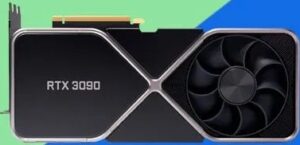 | view on amazon | |
| Best AMD GPU for i7 10700k | 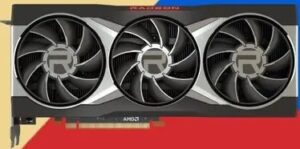 | view on amazon | |
| Best Budget 1440p GPU for i7 10700k |  | view on amazon | |
| Best 4k GPU for i7 10700k | 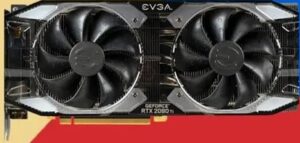 | view on amazon | |
| Best Ray Tracing GPU for i7 10700k | 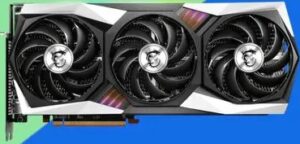 | view on amazon | |
| Best gaming GPU for i7 10700k |  | view on amazon | |
| Best 1440p GPU for i7 10700k |  | view on amazon | |
| Best Mainstream GPU for i7 10700k | 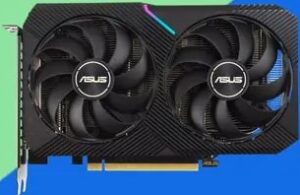 | view on amazon |
NVIDIA GeForce RTX 3090
Best fastest GPU for i7 10700k

Brand: Nvidia | Series/Family: GeForce RTX 3000 series | GPU: Nvidia Ampere GA102 GPU unit | GPU architecture: Nvidia Ampere architecture | Memory: 24GB GDDR6X | Memory bus: 384-bit | Memory data speed: 19.5Gb/s (effective) | CUDA cores: 10496 | Cache: 6MB L2 | Base Clock: 1395MHz | Game clock: Unknown | Boost clock: 1695MHz | Power consumption: 350W | Cooling fans: Dual fan setup | Display Connectors: 3x DisplayPorts, 1x HDMI
REASONS TO BUY
✓24GB of GDDR6X capacity
✓Perfect for 4k resolution and 8k at 60FPS
✓2nd generation Ray Tracing cores
✓3rd generation Tensor cores
✓DLSS AI Acceleration
REASONS TO AVOID
✗High price
✗Lacks USB-C port
✗Size
If you’re an experienced gamer, you would definitely know a lot about NVIDIA and its GeForce RTX graphics card series. Every customer who has bought the GeForce RTX 3090 is playing games happily with satisfied product reviews. It features a long list of ultra-edge features and technologies to be a perfect choice for excellent performance in various games. The card has NVIDIA’s 2nd generation RTX Ampere architecture with Ray Tracing technologies for more advanced and realistic graphics improvements.
Further, we call it the top choice due to its AI performance to give appealing visuals and gaming scenes. If we look at its specifications sheet, you get a massive 24GB of GDDR6X memory based on a 384-bit memory interface, perfect for running AAA titles games at the highest settings. Some other specifications include 10496 CUDA Cores, a base frequency of 1400MHz that can ramp up to 1700MHz, and 2nd generation Ray Tracing Cores for the jaw-dropping gaming experience.
It has multi-monitor support to run four monitors with the help of three DisplayPort ports and one HDMI 2.1 to make the statement true. You can enjoy smooth 4k graphics resolution with a perfect combination of the highest FPS and a three-digit refresh rate. But remember that the FPS reduces to 60 FPS when we fetch 8k quality—overall, FHD and 4k resolution wouldn’t be an issue for it.
Many of our customers are experienced gamers, and some need a perfect card for crypto mining, so you need the following card without any delay. The card becomes an ideal pair for 3D animations and rendering by enabling the RTX feature. Remember, the component will perform well only when the temperature is below 94°C and the input power of 350W is continuously feeding into the element. You will always love the performance and premium gaming quality if you can afford this pricey item
AMD Radeon RX 6800 XT
Best AMD GPU for i7 10700k

Brand: AMD | Series/Family: Radeon RX 6000 series | GPU: AMD Navi 21 XT GPU unit | GPU architecture: AMD RDNA 2 architecture | Memory: 16GB GDDR6 | Memory bus: 352-bit | Memory data speed: 16Gb/s (effective) | Stream processors: 4806 | Cache: AMD 128MB Infinity Cache | Base Clock: Unknown | Game clock: 2150MHz | Boost clock: 2250MHz | Power consumption: 300W | Cooling fans: Triple fan setup | Display Connectors: 2x DisplayPorts, 1x HDMI, 1x USB-C
REASONS TO BUY
✓Ray Tracing
✓Lot of overclocking headroom
✓Perfect 4k quality
✓Effective cooling performance
REASONS TO AVOID
✗Runs hotter
AMD is back with an all-new high-end GPU, the Radeon RX 6800 XT, with an attractive set of features and advanced specifications. Performance-wise, it’s an excellent choice, even taking over the NVIDIA GeForce RTX 3080 in many games, plus it has a competitive price tag. If we look at its inside, it is based on Team Red’s RDNA 2 GPU architecture that uses a 7nm manufacturing process, plus the company has installed numerous powerful technologies to boost the efficiencies over predecessors.
Further, the card has 16GB of GDDR6 memory and uses an infinity cache of 128MB global cache, which is essential when the card has GDDR6 memory instead of GDDR6X type. The cache transfers data from VRAM to the GPU, resulting in 2.4x times more enhanced bandwidth than the VRAM itself. Other crucial specs include 72 computing units, 72 ray accelerators, 128 ROPs, 4806 stream processors, and 288 texture units. Overall, it has pretty much everything to be perfect for current-era use.
Interestingly, the card uses a more-significant die that allows the game clock speed of 2150MHz to boost up to 2250MHz; hence the card is designed to tackle super bursty gaming loads without lacking in performance. Regarding graphics quality, this GPU is perfect for up to 4k resolution with stable other settings. But I suggest using FHD graphics settings since the ray-tracing facility works fine at this level, and you won’t have to compromise on the settings.
As far as connectivity matters, it has a pair of DisplayPort 1.4b type ports, one HDMI 2.1 port, and one USB Type-C port. Build-wise, you can see a rigid die-cast aluminum backplate, shroud, frame, and all-other construction uses the same build material. Its front consists of a silver strip surrounding three fans plus a wider silver strip that leaves the GPU’s back exposed. The cooling is ensured via three fans, an aluminum heatsink, and airflow vents on both the rear and side ports of the card.
AMD Radeon RX 6700 XT
Best Budget 1440p GPU for i7 10700k

Brand: AMD | Series/Family: Radeon RX 6000 | GPU: AMD Navi 22 GPU unit | GPU architecture: AMD RDNA 2 architecture | Memory: 12GB GDDR6 | Memory bus: 256-bit | Memory data speed: 16Gb/s | Stream processors: 2560 | Cache: AMD 96MB Infinity Cache | Base Clock: 2321MHz | Game clock: 2424MHz | Boost clock: 2581MHz | Power Consumption: 230W | Cooling fans: Dual fan setup | Display Connectors: 3x DisplayPorts, 1x HDMI
REASONS TO BUY
✓RDNA 2 at a mid-range price
✓Fair 1080p and 1440p performance
✓Effective cooling
✓Incredible clock speeds
REASONS TO AVOID
✗Slower 4k performance
✗Slightly weaker RT efficiency
If you’re a tech enthusiast, you must have heard about the advancements that AMD makes every year in its technologies and products. The AMD Radeon RX 6700 XT graphics card is powered by RDNA 2 GPU architecture or ‘Big Navi’, featuring numerous current-era features. Most importantly, it has made RDNA 2 architecture more easily accessible to tight-budget customers and offers mid-range prices. It falls between Nvidia’s GeForce RTX 3060 Ti and RTX 3070 in terms of its impressive performance hierarchy.
It features 12GB GDDR6 type graphics memory that can achieve a 16GHz of memory speed. Other crucial specifications include 40 computing units, 40 ray accelerators, 64 ROPs, 160 texture units, and 2560 stream processors. In addition, the card has a base gaming clock of 2424MHz that can ramp up to 2581MHz depending upon the load conditions and temperature.
There are three DisplayPort 1.4a and one HDMI 2.1 port; these options are enough for possibly every type of connection you may need. Also, you get a USB Type-C connection, but the use of this port is sporadic for such cards. Apart from the connectivity, let’s uncover the performance statistics that we got during the testing session. It can provide you with more than enough graphics quality between 1080p to 1440p settings—it still works fine for FHD resolution. But it’s not a suitable option for anything with 2k+ resolution.
At the end of the review, I would like to tell you about its build. Well, the product’s design is similar to the other cards in the RDNA lineup, with numerous honed angles, red lettering, a silver band up to the middle, and a pair of fans having the letter ‘R’ written in the middle. There is no RGB lighting; however, the red Radeon branding lights up with a red light and beautifully merges with the red accents around the card’s sides. Moreover, the card has an 8+6 power design and a 230 watts of maximum TDP value.
NVIDIA GeForce RTX 2080 Ti
Best 4k GPU for i7 10700k

Brand: Nvidia | Series/Family: GeForce RTX 20 series | GPU: Nvidia Turing TU102 GPU unit | GPU architecture: Nvidia Turing architecture | Memory: 11GB GDDR6 | Memory bus: 352-bit | Memory data speed: 14Gb/s (effective) | CUDA cores: 10496 | Cache: 5.5MB L2 | Base Clock: 1350MHz | Game clock: Unknown | Boost clock: 1545MHz | Power consumption: 250W | Cooling fans: Dual fan setup | Display Connectors: 3x DisplayPorts, 1x HDMI, 1x USB-C
REASONS TO BUY
✓Best 4k resolution at 120Hz
✓Silent fans movement
✓Excellent cooling
✓Energy-efficient
REASONS TO AVOID
✗Pricey
✗Only one HDMI port
Tech enthusiasts who are looking to build a top-performance workstation with a powerful GPU must go for this card. It’s powered by NVIDIA Turning GPU architecture featuring an all-new RTX platform and technologies, allowing faster performance, real-time ray tracing, enhanced graphics quality, and AI gaming experience.
Further, the card comes with 11GB of ultra-fast GDDR6 memory, enough for playing high-resolution games with a pretty impressive refresh rate and FPS. In addition, and it has the latest TU102 GPU unit, 4352 NVIDIA CUDA Cores processors adequate for gaming, 11GB memory capacity with 352-bit memory bus and 616GB/s memory bandwidth, 78T RTX OPS, 72 Ray Tracing cores, 576 Tensor cores, and 96 ROP units. Further, the base clock frequency of 1350MHz can ramp up to 1635MHz, depending upon your requirement.
It comes with all types of necessary connectivity options, including the DisplayPort, HDMI, and USB-C connection—the standard video ports can be utilized to power four monitors with this card at a time. No doubt, the card can run current-era AAA titles with up to 8k resolution, but it compromises on some settings in that case. But if you can work out with 4k 50+ fps resolution graphics, it won’t disappoint you.
In the end, I would like to add some information about its structure, appearance, and more. The card’s design conveys a premium outlook, plus it has a brushed metal backplate, and the front panel comprises plastic. Overall, the black and silver accents look great on the mobo. It uses a TRI-FROZR cooler design for cooling purposes consisting of three fans with a unique fan-blade design that passes the air to the massive heatsink. It also allows you to experience the VR gaming thrill effectively.
MSI Gaming Radeon RX 6800
Best Ray Tracing GPU for i7 10700k

Brand: MSI | Series/Family: Gaming Radeon RX 6000 | GPU: AMD Navi GPU unit | GPU architecture: AMD Radeon RDNA 2 architecture | Memory: 16GB GDDR6 | Memory bus: 256-bit | Memory data speed: 16Gb/s | Stream processors: 4608 | Cache: AMD 128MB Infinity Cache | Base Clock: 1850MHz | Game clock: Unknown | Boost clock: 2285MHz | Power Consumption: 300W | Cooling fans: Triple fan setup | Display Connectors: 3x DisplayPorts, 1x HDMI
REASONS TO BUY
✓Excellent ray tracing performance
✓Perfect for 1440p resolution
✓Adequate cooling
✓All-type connectivity
REASONS TO AVOID
✗Divisive design
✗It expensive than RTX 3070
The original AMD Radeon RX 6800 is a welcome addition to the series and a more affordable option; it comes under the RX 6800XT and RX 6900XT with pretty-solid features and performance. Consider it an alternative to the NVIDIA high-end graphics items with similar gaming efficiency. Well, MSI has taken this card and converted it into Radeon RX 6800 Gaming X Trio to make it the best GPU. It can deliver 5-15% more output than the RTX 3070, but it also costs about 10% more.
If you look closely at its engine, this is based on AMD RDNA 2 GPU architecture used by all the current-era cards from the brand. Interestingly, it’s the same technology behind PS5 and Xbox Series X. According to the official data, it comes with 16GB GDDR6 graphics memory based on the 256-bit memory interface. Further, its base clock speed of 1815MHz can bump up to a boost clock of 2105MHz. For your information, we practically tested the item, and the stats stipulate that it can go even above its rated boost clock.
For connectivity, it has two DisplayPort 1.4b ports, one HDMI 2.1 port, and one USB Type-C port so that you can enjoy all-rounder connectivity options. As far as the performance matters, the card can deliver up to 4k graphics, but it may result in lower fps and refresh rate. Practically, you can expect excellent 1440p graphics quality with a three-digit refresh rate and impressive FPS from this card.
At the end of the review, I would like to put some light on the card’s build, thermal structure, and design. Like the RX 6800X, it has a die-cast aluminum backplate, shroud, frame, and other structures made from the same material. Further, the cooling performance is ensured via a sturdy triple-fan design, a more oversized heatsink, and wider vents on the rear and sides of the card. It doesn’t stop here. The structure contains black trim with a silver stripe at the front, plus more giant silver strips on the back.
NVIDIA GeForce RTX 3080 Founder Edition
Best gaming GPU for i7 10700k

Brand: Nvidia | Series/Family: GeForce RTX 3000 | GPU: Nvidia Ampere GA102 GPU unit | GPU architecture: Nvidia Ampere architecture | Memory: 12GB GDDR6X | Memory bus: 384-bit | Memory data speed: 19Gb/s | CUDA cores: 10240 | Cache: Unknown | Base Clock: 1370MHz | Game clock: Unknown | Boost clock: 1670MHz | Power Consumption: 350W | Cooling fans: Dual fan setup | Display Connectors: 3x DisplayPorts, 1x HDMI
REASONS TO BUY
✓Perfect for 4k graphics
✓Powerful AI performance
✓Cooling
✓Military-grade components
✓RGB lighting
REASONS TO AVOID
✗Only one HDMI port
The GeForce RTX 3080 is the first third-party graphics card launched in the GeForce RTX 30 series with numerous modern-gaming aspects. Interestingly, NVIDIA has done a ton of research and modified the PCB design along with the cooling performance of the Founder Edition cards. Nvidia’s Ampere GPU architecture is enough to power up this card plus optimally run other technologies, like Microsoft DirectX 12 Ultimate and NVIDIA DLSS, Ansel, GPU Boost, and more during intense gaming sessions.
Further, the card features 2nd generation Ray Tracing cores for making the scenes more like the real world, and 3rd generation Tensor cores help boost the AI gaming performance. If we look at the specs chart, the important ones include 10GB of GDDR6X memory based on 320-bit memory architecture with 19Gb/s of memory speed and 8704 CUDA Cores. It has a base clock speed of 1.44GHz that can be uplifted up to 1.71GHz; during the testing sessions, we recorded more clock speed than the official data told us.
You get a pair of HDMI 2.1 ports and three DisplayPort, 1.4b ports, to support the multi-monitor features to accommodate up to four monitors. We know you’re curious about the graphics quality it can deliver. So, we could fetch up to 4k, but it’s perfect for 1440p resolution at max settings, together with a three-digit refresh rate and 60+ fps.
We know every user wants to buy a card that performs well and lasts for years. It seems the brand has listened to your heart and used military-grade components during manufacturing. The item comprises high-quality chokes, MOSFETs, capacitors, and more. Moreover, this GPU also has customizable RGB lighting via ASUS AURA software. The cooling is ensured with three axial-tech fans with alternative directions, an aluminum shroud, a massive heat sink, and six heat pipes.
PNY GeForce RTX 3070 XLR8 Gaming
Best 1440p GPU for i7 10700k

Brand: PNY | Series/Family: GeForce RTX Revel Epix-X | GPU: Nvidia Ampere 8nm GA104 GPU unit | GPU architecture: Nvidia Ampere architecture | Memory: 8GB GDDR6 | Memory bus: 256-bit | Memory clock speed: 14000MHz effective | CUDA cores: 5888 | Cache: Unknown | Base Clock: 1500MHz | Game clock: Unknown | Boost clock: 1725MHz | Power Consumption: 220W | Cooling fans: Triple fan setup | Display Connectors: 3x DisplayPorts, 1x HDMI
REASONS TO BUY
✓Excellent 1440p performance
✓Ray Tracing
✓Amazing value
✓Lowest TGP requirement
REASONS TO AVOID
✗Older VRAM
We have GeForce RTX 3070 ready to uplift the gaming performance standing in front of numerous graphics cards. NVIDIA has mentioned that this card can provide a similar gaming performance as the previous generation RTX 2080 Ti at a much lower price. Moreover, it performs the same or more than the previous-generation flagship graphics cards, which is good news.
It uses the same NVIDIA Ampere GPU architecture that ensures optimal graphics performance and runs numerous other technologies. The card has 8GB of GDDR6 memory based on a 256-bit memory interface, a 1.50GHz base clock, and a 1.73GHz boost clock speed. Further, it has 5888 CUDA Cores unfurl across 46 streaming multiprocessors and has 8.6 CUDA capability. Moreover, the card comprises 2nd generation Ray Tracing core and 3rd generation Tensor cores and advanced graphics technologies.
You can connect up to four displays with this card via three DisplayPorts and one HDMI 2.1 port—this card supports a maximum of 8k 60Hz graphics output. But the practical performance statistics are slightly different. It smoothly runs at 1080p quality with 144Hz refresh rate and 1440p with 100+ refresh frequency at the highest setting, plus it runs perfectly fine at even 4k. Plus, you can enjoy much more efficient ray tracing and DLSS performance.
Are you still not impressed by this card? If so, then take a look at its power-efficient strategies. The card has only 220 watts of graphics-power requirement, which is 100 watts less than the RTX 3080. You would know that lower power reduces the power expense as well as you don’t need a bigger-sized card with more oversized heatsinks and stuff like that. Other than several positive aspects, this card has some downsides as well—it has a slightly older VRM design and a mid-level cooling system.
ASUS Dual GeForce RTX 3060 V2 OC
Best Mainstream GPU for i7 10700k

Brand: ASUS | Series/Family: GeForce RTX 30 series | GPU: Nvidia Ampere GA104 GPU unit | GPU architecture: Nvidia Ampere architecture | Memory: 12GB GDDR6 | Memory bus: 192-bit | Memory data speed: 15Gb/s | CUDA cores: 3584 | Cache: Unknown | Base Clock: 1770MHz | Game clock: 1837MHz | Boost clock: 1867MHz | Power Consumption: 170W | Cooling fans: Dual fan setup | Display Connectors: 3x DisplayPorts, 1x HDMI
REASONS TO BUY
✓Affordable
✓Best 1080p and 1440p performance
✓Ray Tracing
✓Support VR technolgies
REASONS TO AVOID
✗Louder fans’ operations
Finally, we have GeForce RTX 3060 on our list, where we’re trying to figure out the best graphics card for Intel i7 9700k. Out of the whole GeForce generation, Nvidia’s 60-class is declared the best-selling series. We have seen NVIDIA Ampere GPU architecture in the 30-series as a replacement for aged Turing architecture, and the series comes with exceptional performance compared to the 20-series cards. ASUS has done a great job of modifying the original version into a more versatile card for gaming.
If we look at its specifications table, it has 12GB of GDDR6 memory based on a 192-bit memory interface. Most of the crucial specs of the card include a GA106 chipset, 3584 CUDA cores, 48 ROPs, 218 RT cores, 112 Tensor cores, and PCIe 4.0 support. Further, it has a 1770MHz base clock speed that can increase up to 1867GHz and is enough to support the gaming load plus the processor capabilities. Further, it has three DisplayPort ports and one HDMI 2.1 port to power up four monitors simultaneously.
During the testing sessions, we found it a perfect option for 1080p and 1440p at maximum settings when we tested the card. However, it is limited to playing games above 1440p quality and inconvenient to tackle demanding tasks. Other than the excellent up to HD+ gaming and performance and excellent efficiencies. If you have a tight budget, this card with ray-tracing enabled can be the best choice.
You would know that with greater performance and overclocking, the component always requires enough cooling and input power. While operating this card, you must keep the temperature below 93°C and feed 170W of input graphics card power. Interestingly, it’s enough to fulfill the needs of power for VR thrill as the item fully supports and is ready to power up your VR gaming experience. In short, this card has everything to be the best GPU for gamers and content creators.
Conclusion
The most crucial rig component after the processor is the graphics card. When we play games, create content, or render models, the need becomes a necessity. At precisely this spot, a graphics card comes into play. We also discussed the Intel Core i7 10700k processor and its excellent gaming performance; it is a perfect choice for playing current-era games. However, we need the best GPU for i7 10700k to boost the gaming performance and gaming experience.
Finding an ideal graphics card for this chip isn’t that easy. It takes hours of research before choosing an ideal combo according to many requirements and needs. Don’t worry; we have added eight cards to our list and tried to put at least one item sitting perfectly with your condition. Our list contains items according to best budget, performance, 1080p quality, 1440p quality, 4k quality, and more. I’m sure you would have chosen one for yourself. So, go home and enjoy the gaming ride.
Frequently Asked Questions
What GPU is best for the Intel i7?
There are many GPUs in the market ready to enhance your gaming experience. However, we have done tons of research and found the GeForce RTX 3080 as the best combination for gaming. It offers the best 4k quality graphics, excellent cooling performance, rugged build, attractive RGB lighting, and more.
Which GPU is best for i7-10700K?
RTX 2080 Ti Black Gaming: Best overall graphics card for Core i7-10700K. Since the 9700K can’t induce CPU bottleneck no matter which GPU you pair it with, the best available GPU for the 9700K is the RTX 2080 Ti.
What GPU goes well with i7?
In my experience, I paired I7 3770 with RX 470 (Performance near RX570 and 1060 3G). It was good, slightly bottlenecked. If you have another choice on getting a new pc, you should at least get i3-10300 or Ryzen 3100 with any GPUs. It will be enough to handle everything.
Is i7 10700K good with 3080?
In short, yes. The GeForce RTX 3080 sits perfectly fine with the Intel Core i7 10700k processor. You can enjoy appealing surfing of 4k graphics at a three-digit refresh rate and high settings. It does not stop here; it offers excellent cooling, ray tracing, AI rendering, RGB lighting, and more.


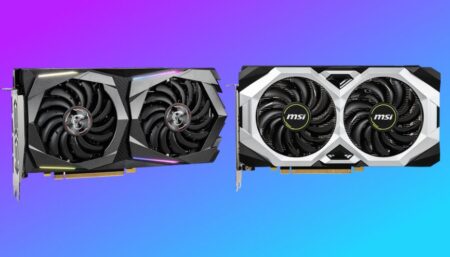
![Best GPU for Ryzen 7 3700X [Updated] 2025](https://www.ingameloop.com/wp-content/uploads/Best-GPU-for-Ryzen-7-3700X-450x257.jpg)
![Best GPU for Ryzen 5 3400G [Updated]](https://www.ingameloop.com/wp-content/uploads/Best-GPU-for-Ryzen-5-3400G-450x257.jpg)


